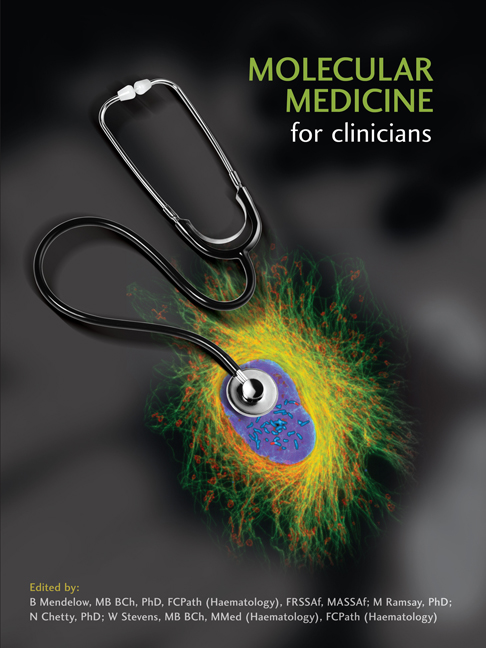Book contents
- Frontmatter
- Contents
- Foreword
- Acknowledgements
- Chapter 1 Introduction
- Keynote Essay 1: Defining Who We Are: DNA in Forensics, Genealogy and Human Origins
- Section 1 Principles Of Cellular And Molecular Biology
- Chapter 2 Digital Concepts in Molecular Medicine
- Chapter 3 The Anatomy and Physiology of the Genome
- Chapter 4 Molecular Cell Biology
- Chapter 5 Genetic Variation
- Chapter 6 Genes in Development
- Chapter 7 Tools of Molecular Medicine
- Chapter 7a Nucleic Acid Methods
- Chapter 7b Protein Methods
- Chapter 7c Cellular Phenotyping and Flow Cytometry
- Chapter 7d Molecular Cytogenetics
- Keynote Essay 2: The Human Genome
- SECTION 2 MOLECULAR PATHOLOGY
- SECTION 3 MOLECULAR THERAPEUTICS
- SECTION 4 RESEARCH AND THE CONTINUING EVOLUTION OF MOLECULAR MEDICINE
- Glossary
- Contributors’ Biographies
- Source Material And Recommended Reading
- Permissions And Credits
- Index
Chapter 7a - Nucleic Acid Methods
from Chapter 7 - Tools of Molecular Medicine
Published online by Cambridge University Press: 04 June 2019
- Frontmatter
- Contents
- Foreword
- Acknowledgements
- Chapter 1 Introduction
- Keynote Essay 1: Defining Who We Are: DNA in Forensics, Genealogy and Human Origins
- Section 1 Principles Of Cellular And Molecular Biology
- Chapter 2 Digital Concepts in Molecular Medicine
- Chapter 3 The Anatomy and Physiology of the Genome
- Chapter 4 Molecular Cell Biology
- Chapter 5 Genetic Variation
- Chapter 6 Genes in Development
- Chapter 7 Tools of Molecular Medicine
- Chapter 7a Nucleic Acid Methods
- Chapter 7b Protein Methods
- Chapter 7c Cellular Phenotyping and Flow Cytometry
- Chapter 7d Molecular Cytogenetics
- Keynote Essay 2: The Human Genome
- SECTION 2 MOLECULAR PATHOLOGY
- SECTION 3 MOLECULAR THERAPEUTICS
- SECTION 4 RESEARCH AND THE CONTINUING EVOLUTION OF MOLECULAR MEDICINE
- Glossary
- Contributors’ Biographies
- Source Material And Recommended Reading
- Permissions And Credits
- Index
Summary
INTRODUCTION
Isolation of target nucleic acids (e.g. singlestranded DNA, double-stranded DNA, total RNA, mRNA, viral RNA) is the initial step in most nucleic acid techniques (NAT). Different types of human tissues (e.g. whole blood, plasma, serum, urine, saliva, buccal mucosa, skin, hair, bone marrow, tissue biopsies) may be used as a starting material for isolation of human genomic DNA, total RNA or nucleic acids from infectious pathogens (e.g. HIV-1 RNA, DNA from Mycobacterium tuberculosis). Isolation of nucleic acids from samples involves extraction by cell membrane disruption (cell lysis) followed by purification from cellular debris and finally isolation (precipitation or elution) of DNA and/or RNA. Several approaches exist, employing different biochemical procedures for the extraction and purification of nucleic acids. Recently a number of automated nucleic acid extraction systems have been developed to allow highthroughput sample preparation in high-volume diagnostic laboratories. Isolated nucleic acids are then used for various downstream applications including polymerase chain reaction (PCR), sequencing and micro array analysis. Southern blotting, where by DNA fragments obtained by restriction enzyme digestion are transferred from gels onto nylon membranes for subsequent probing, is used more rarely today in medical applications. Messenger RNA molecules of varying sizes can be analysed using the technique referred to as Northern blotting. (Western blotting, covered in more detail in Chapter 7b, is concerned with protein analysis).
PRINCIPLE OF NUCLEIC ACID HYBRIDISATION – THE BASIS OF MOLECULAR TECHNOLOGIES
Nucleic acid hybridisation is based on the ability of single-stranded nucleic acid molecules (DNA or RNA) to bind/hybridise to each other and thus form double-stranded molecules. Hybridisation occurs according to the principle of base complementarity when hydrogen bonds are formed between adenine (A) and thymine (T), and cytosine (C) and guanine (G). Nucleic acid hybridisation is utilised in molecular techniques mainly in two ways: to initiate in vitro synthesis and/or to detect target nucleic acid molecules. Initiation/ priming of in vitro synthesis is achieved by using short single-stranded DNA (often referred to as oligonucleotides) or RNA molecules (usually 20–30 nucleotides long) termed primers.
- Type
- Chapter
- Information
- Molecular Medicine for Clinicians , pp. 75 - 82Publisher: Wits University PressPrint publication year: 2008



